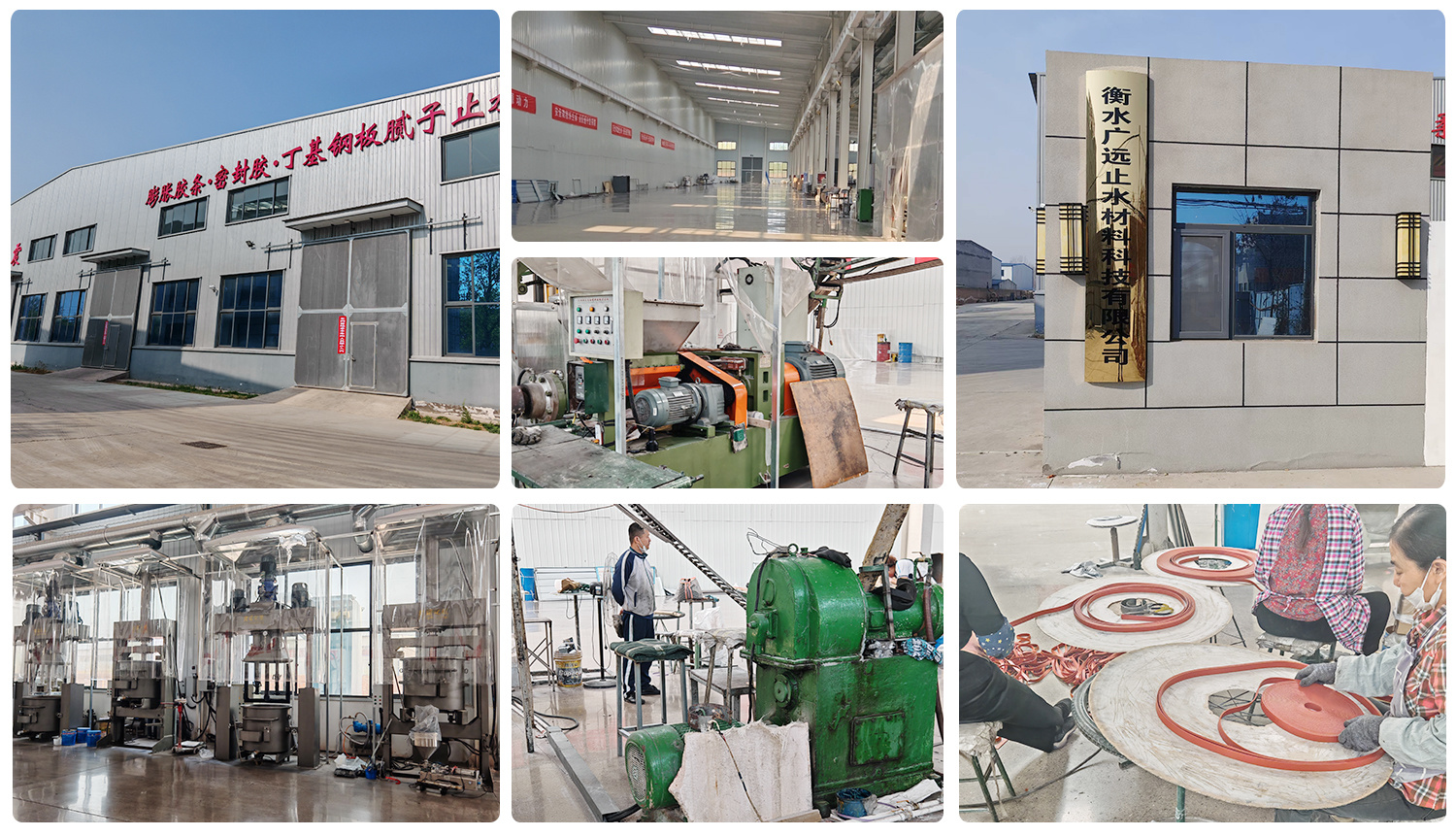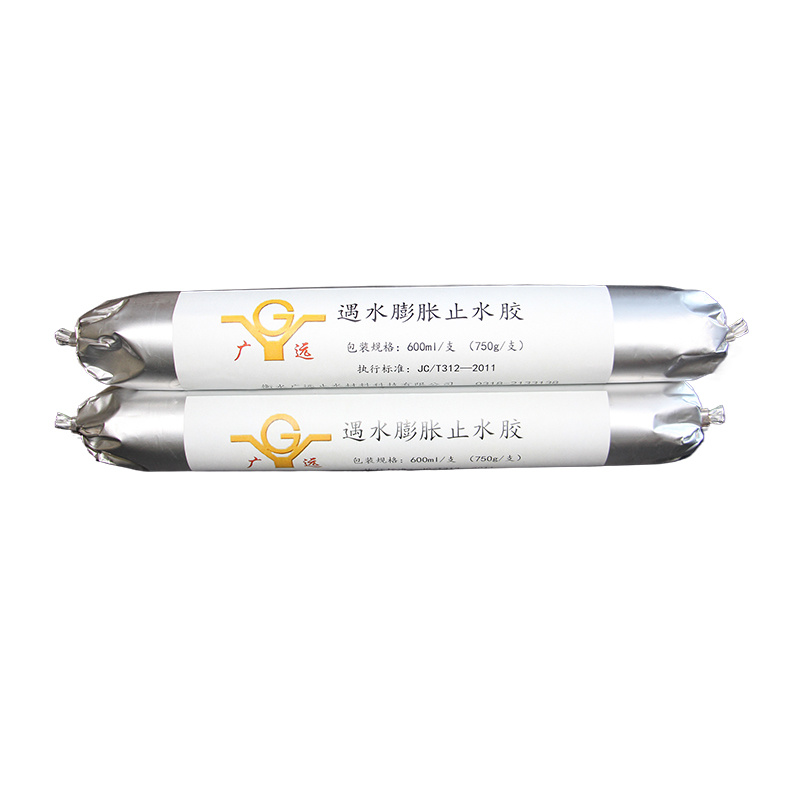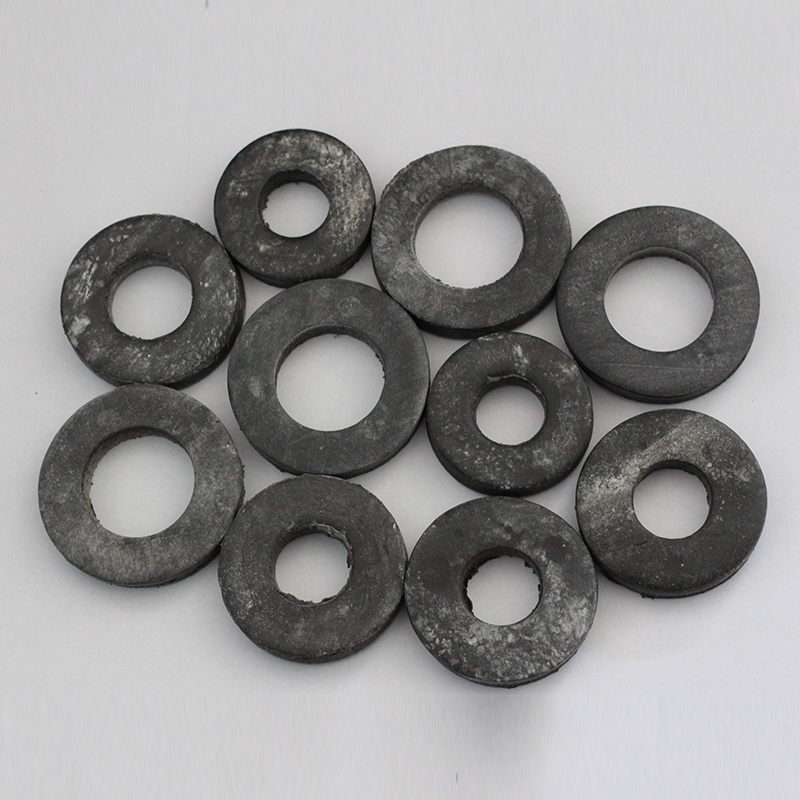

Rubber waterstop
- Commodity name: Rubber waterstop
Contact Info
Classification
Buried rubber waterstop, a product mainly used for setting waterstops inside concrete structures such as concrete deformation joints and expansion joints. Utilizing the high elasticity and compression deformability of rubber, it produces elastic deformation under various loads, thus achieving tight sealing and effectively preventing water leakage and seepage in building components, and providing shock absorption and buffering. This ensures the service life of engineering structures.
There are two methods for joining buried rubber waterstops: one is cold jointing using an adhesive, and the other is hot jointing using a vulcanization mold. The following describes the two methods: Cold jointing with adhesive uses a special cold jointing glue for rubber waterstops. Using the lap joint method, the surfaces to be joined are ground smooth by 5-10 cm with a grinding machine, and then glued and pressed. This method has the advantages of high strength, fast solidification, convenient construction, and time and labor saving, meeting the quality requirements of general projects.
The on-site hot vulcanization method uses a vulcanization mold and raw rubber sheet that matches the waterstop for on-site vulcanization and hot jointing. This method has high construction difficulty but ideal jointing effects, suitable for projects with strict quality requirements.
Buried rubber waterstops are partially or fully embedded in concrete during concrete pouring. After the previous section of concrete is poured, the construction joint interface hardens and surface dries. After removing the floating slag from the interface, ensure the waterstop is flat at the interface before pouring the concrete. The joint must be well bonded. If on-site conditions allow, hot vulcanization can be used. Simple 'lapping' without any treatment is absolutely prohibited. Then, thoroughly tamp and vibrate the concrete to position the waterstop, ensuring good bonding with the concrete to avoid affecting the waterstop effect.
During construction, due to the presence of many sharp stones and steel bars in the concrete, attention should be paid to the impact force during tamping and positioning of the waterstop to avoid puncturing the rubber waterstop due to excessive force. If any cracks are found, they should be repaired immediately; otherwise, the ability of the rubber waterstop to resist external forces will be significantly reduced when the joint deforms and is subjected to water pressure.
When positioning the rubber waterstop, the product installation must be fixed to prevent displacement during concrete pouring and ensure the correct position of the waterstop in the concrete. It must be kept flat at the interface and must not be allowed to roll or twist. If twisting or unevenness is found, adjustments should be made immediately. Common methods for fixing waterstops include: using additional reinforcing bars; special clamps; lead wire and formwork. If drilling is required, it can only be done at the edge installation area of the waterstop and must not damage other parts.
Back-attached rubber waterstop
External rubber waterstops, also known as back-attached or externally placed waterstops, are a type of waterstop structure installed on the outer side (water-facing side) of the concrete deformation joints and settlement joints of underground structures. They utilize the material elasticity and structural form of the waterstop to adapt to the expansion and contraction deformation of the concrete.
External rubber waterstops utilize the high elasticity of rubber to produce elastic deformation under various loads, thus achieving tight sealing and effectively preventing water leakage and seepage in building structures, and providing shock absorption and buffering. In many engineering designs, there are expansion and contraction requirements between civil engineering and water conservancy structures, and there are problems such as waterproofing and shock resistance. Therefore, the use and installation of rubber waterstops are effective solutions. They are mainly used in the construction joints and deformation joints of cast-in-place concrete, forming an integral part of the foundation engineering, underground facilities, tunnels, culverts, water conveyance channels, and dams, ensuring the service life of engineering construction. During the installation of rubber waterstops, if it is found that part or all of the waterstop is embedded in the concrete during the concrete pouring process, and there are many sharp stones and steel bars in the concrete, because the tear strength of plastics and rubber is 3-5 times lower than the tensile strength, once the waterstop is punctured or torn, the crack will expand without much external force. Therefore, during the positioning of the waterstop and concrete pouring, attention should be paid to the positioning method and pouring pressure to prevent the waterstop from being punctured.
Applied to the waterproofing of deformation joints in underground structures, dams, reservoirs, swimming pools, roofs, and other building materials and structures. The selection of back-attached waterstops can be based on the following aspects: The corrosive effects of the medium to be contacted (such as acids, alkalis, salts, oils, solvents, and various corrosive gases) on the waterstop should be considered. When encountering weakly acidic or alkaline corrosive media, chloroprene rubber waterstops should be selected. When encountering oil-based corrosive media, nitrile rubber waterstops should be selected. If there is a possibility of mold infestation, the mildew resistance of the rubber waterstop should be considered, and its grade should reach level 2 or above. The selection of waterstop material should consider the operating conditions, such as the influence of temperature, ultraviolet and ozone aging, and repeated deformation. In low-temperature conditions, EPDM rubber waterstops should be selected.
About Us
Hengshui Guangyuan Waterstop Materials Technology Co., Ltd. is a comprehensive enterprise that has been committed to the research, development, production, and sales of engineering waterstop rubber for nearly 30 years. It specializes in the research, development, production, and sales of professional sealing waterstop materials: water-swelling waterstop strips series, single/double-component polyurethane sealant series, steel plate putty waterstop series, rubber waterstop series, and caulking clay series products. The products are reliable in quality and widely used, and have been recognized by many engineering units!
Business Philosophy: Focus on building waterproofing: Providing high-quality products and services for building waterproofing
Service Concept: To make customers satisfied with comprehensive, meticulous, and efficient service
Business Spirit: Quality Assurance, Professional Service: Double guarantee to eliminate the worries of users about waterproofing

Production and Inspection

Factory Photos

Keywords
Free Access To More Product Information
* Note: Please be sure to fill in the information accurately and keep the communication unblocked. We will get in touch with you as soon as possible!












